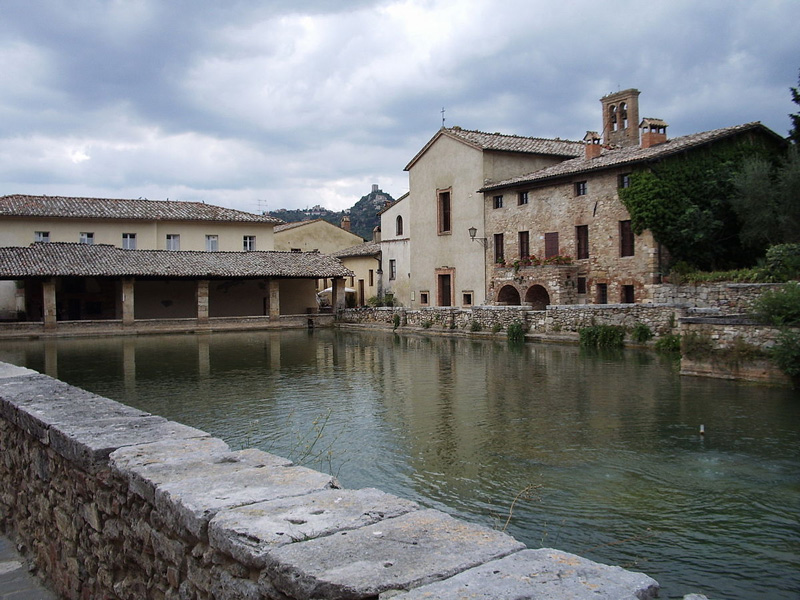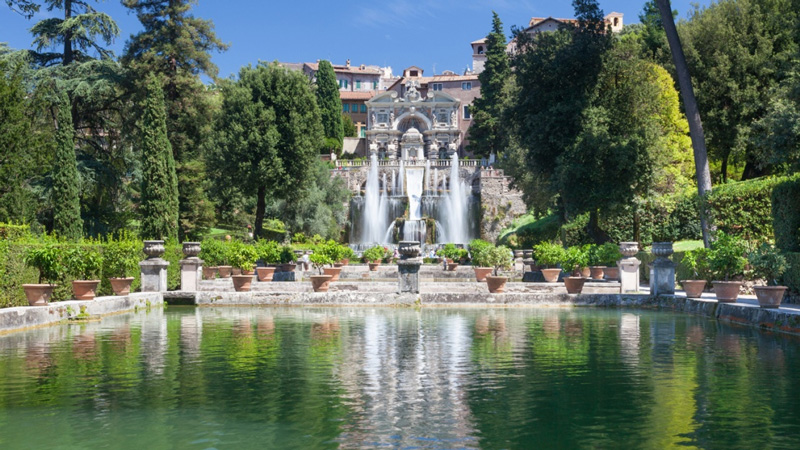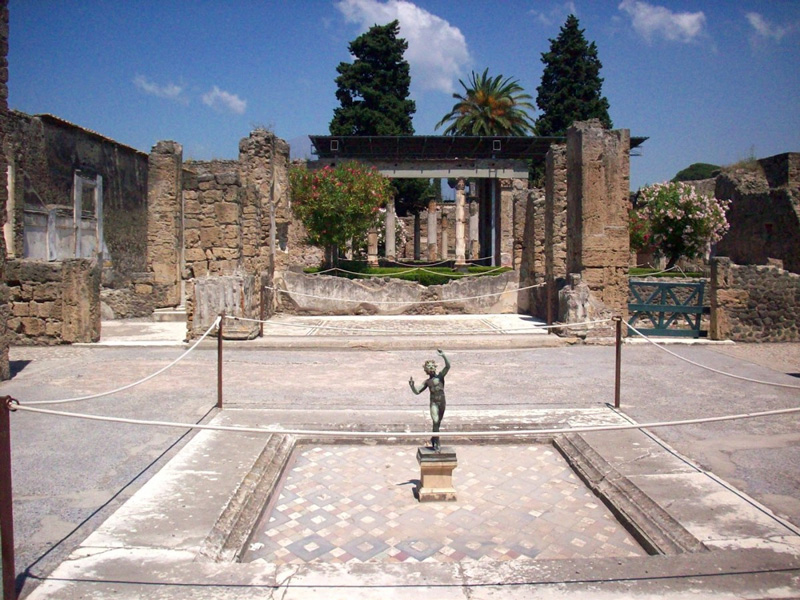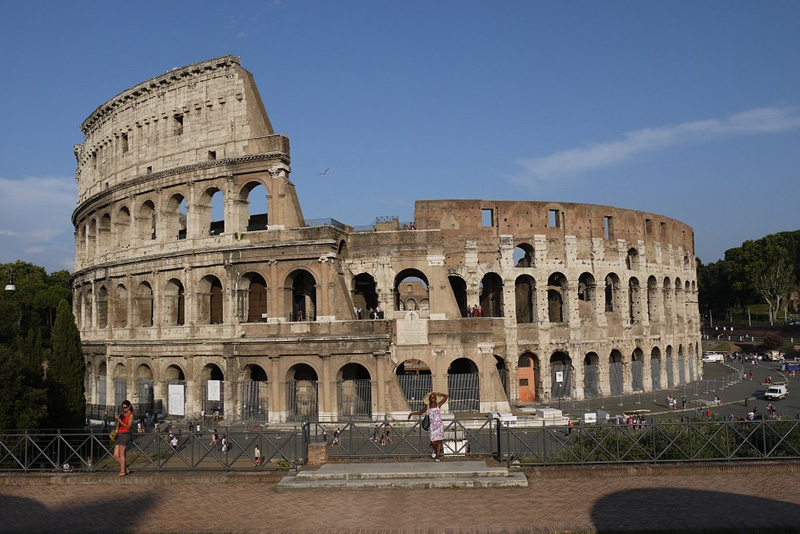9-day GHIBERTI PRIVATE TOUR
Tuscany, Rome and the Amalfi Coast
HIGHLIGHTS
- Florence, an open-air museum
- Siena, power in the Middle Ages
- Val d'Orcia, where Man and Nature blend with harmony
- Tivoli, an invitation from the Emperor
- Pompei, the Roman city fixed in lava
- The Amalfi Coast, where divas are at home
- Capri, a love story with sea and sky
- Rome, walking in the shade of history
- Vatican City, Popes and power
WHAT'S INCLUDED:
Accommodations in Double Room with Continental Breakfast (*):
- Day 1: 3* to 5* Hotel in Florence city centre
- Days 2 & 3: 3* to 5* Country House OR Hotel in Val d’Orcia area
- Day 4: 3* to 5* Hotel in Castelli Romani area
- Days 5 to 7: 3* to 5* Hotel on the Amalfi Coast
- Days 8 & 9: 3* to 5* Hotel in Rome city centre
(*) The Hotel List is available upon request
Transfers (**):
- Day 2: Transfer to your accommodation in Val d’Orcia area – Stopover in Siena
- Day 5: Transfer to your accommodation on the Amalfi Coast – Stopover in Pompei
- Day 7: Transfer from your accommodation on the Amalfi Coast to Amalfi/Positano/Sorrento Harbour - Transfer by public ferry to Capri Harbour - Transfer by public ferry to Amalfi/Positano/Sorrento Harbour- Transfer to your accommodation on the Amalfi Coast
- Day 8: Transfer to your accommodation in Rome
(**) All transfers by private car (2 pax) / minivan (3 to 6 pax) / minibus (7 to 10 pax)
Private Guided Visits / Tours (***)/ Activities:
- Day 1: 3-hour private walking tour of Florence city centre with an Authorised Tourist Guide
- Day 2: Tuscan Cooking Class in Val d’Orcia area
- Day 3: Full-day excursion to Val d’Orcia area - 3-hour private walking tour of Montepulciano city centre with a Sommelier Guide, with tastings of Vino Nobile, Pecorino cheese and truffle - Visit of a Supertuscan Brunello di Montalcino wine cellar with tastings
- Day 4: Full-day excursion to Tivoli with an Authorised Tourist Guide - Drop off at your accommodation in Castelli Romani area
- Day 5: 2-hour private walking tour of Pompei Archeological Area with an Authorised Tourist Guide
- Day 6: Full-day excursion of the Amalfi Coast: Amalfi, Positano and Ravello
- Day 8: 3-hour private walking tour of the Colosseum and Imperial Fora Archeological Area in Rome with an Authorised Tourist Guide
- Day 9: 3-hour private tour of the Vatican City with an Authorised Tourist Guide
(***) All tours by private car (2 pax) / minivan (3 to 6 pax) / minibus (7 to 10 pax)
Admission Tickets to:
- Hadrian’s Villa and Villa d’Este in Tivoli
- Pompei Archeological Area
- Admission to Galleria dell’Accademia (Michelangelo’s David) in Florence
- Admission to Augustus Gardens and Villa San Michele in Capri Island
- Colosseum and Imperial Fora Archeological Area in Rome
- Vatican Museums and Sistine Chapel in Rome
Full emergency assistance 24 hours/day by our Back Office
List of recommended restaurants and deli shops along the itinerary
All taxes
Options:
- Pick up at Florence Airport /Railway Station at the start of the tour
- Accommodation in Florence the night before the beginning of the tour
- Drop off at Rome Airport /Railway Station at the end of the tour
- Other options upon request
Day 1 - Florence
Benvenuti in Italia, welcome to Italy.
Welcome to Florence, the land of Giotto and Dante!
Despite its international fame and greatness, Florence is also a small city whose history has been interwoven with that of its passionate citizens for more than one thousand years
In Piazza Duomo, you will be astonished by the Duomo with the incredible Brunelleschi’s dome, a masterpiece of art and architecture whose building techniques are still covered by a veil of mystery. Beside it, Giotto’s Belltower and the Baptistery, one of the oldest buildings in the city, with its famous bronze doors made by no and Ghiberti in the 14th and 15th centuries. In Piazza della Signoria, you will walk in the middle of bronze and marble masterpieces by Giambologna and Cellini inside the marvellous Loggia dei Lanzi, and will admire the imposing Palazzo Vecchio, one of the symbols of Florence and still the seat of government of the city. You may also spare some time to relax, visiting a typical market for shopping, strolling through the city's pedestrian streets, and crossing the oldest bridge in Florence, “Ponte Vecchio” (Old Bridge), rich in jewellery shops.
Your itinerary may include Galleria dell’Accademia, hosting Michelangelo's David, the most famous sculpture in the world. The David was uncovered and shown to the Florentines on September 8, 1504, and with its height of 4 meters, the impeccable physical features and the political significance that the iconography of David had taken over the previous century left the Florentines of the time speechless and has done the same ever since with visitors from all over the world.
Florence is also the main Italian centre for the production of high-quality leather goods. Florentine artisans are so famous that many fashion brands have opened factories in the city or close to it due to their high skill and the continuous inspiration designers take from the town’s masterpieces. The area around Piazza Santa Croce, in particular, hosts numerous leather shops and workshops.
Thanks to the tradition of Tuscan tanneries, there is no better place to find shoes for all tastes than Florence: from the creations, designed and produced by hand by skilled craftsmen, to the extensive collections available in stores, renewed every season. Above all, Ferragamo (also worth seeing the museum), Gucci and Prada for refinement and elegance. If you prefer a simpler style, many shops specialise in handmade shoes and sandals across the river Arno.
At lunch, you may enjoy “Panino con Lampredotto” in a typical Florentine market. At dinner, taste the simple yet unforgettable recipes of the Tuscan tradition, such as "Crostini", "Panzanella", and "Peposo". And remember, Florence is the home of "Fiorentina" steak! In case you are a vegetarian, don’t worry: Tuscan cuisine offers tasty alternatives like “Pappa al Pomodoro” or “Ribollita” (read our BLOG to know more about Tuscan Cuisine).

Day 2 – Siena
In Siena, the city of the Palio, you will walk on the famous Piazza del Campo, the concave square where horses run twice a year in a dangerous race that symbolizes the city’s freedom. On the days of the Palio, the whole town goes crazy; read about it in our BLOG. Indeed, you will not forget the colour of frontages and roofs, the renowned colour “Sienna”, a pigment first produced during the Renaissance, that makes the city lovely and warm. And don’t forget to taste the Senese sweets: “cantucci” (biscuits with toasted almonds), “ricciarelli” (soft biscuits with icing sugar), “panforte”(cake with fruit nuts and spices) and “cavallucci” (biscuits with honey, walnut, candied fruits and spices. Travellers who love dessert will be delighted!

Day 3 – Val d'Orcia
Val d’Orcia is one of the most fascinating places in Italy, included by UNESCO in the list of World Heritage Sites. Its landscape is a part of the agricultural hinterland of Siena, redrawn and developed when it was integrated into the city-state's territory in the 14th and 15th centuries to reflect an idealized model of good governance and create an aesthetically pleasing picture. The landscape’s distinctive aesthetics, flat chalk plains with almost conical hills and fortified settlements on top, inspired many artists. Their images have come to exemplify the beauty of well-managed Renaissance agricultural landscapes.
Your first stop will be in Pienza, “Pio’s town”: here, Pope Pius II decided to build the perfect palazzo for his papal court according to the project of an “Ideal City" drawn up by artists such as Piero della Francesca. From the loggia of the Palace, you will enjoy a breath-taking panorama of the valley. Pienza is also the area of the typical “Pecorino di fossa” cheese, an absolute delight to the palate!
In Montepulciano, our friend Francesca will lead you to discover this beautiful town full of stories, legends and thousand flavours, introducing you to the excellent products of this unique land: olive oil, pecorino cheese and Vino Nobile di Montepulciano.
Then, you will get to Montalcino, one of the prettiest hill towns in Tuscany. Around the village, rows of olive trees, precious grapevines and yellow fields create an enchanting landscape. Here you may visit a Brunello winery to taste the most famous SupertuscanSupertuscan wine, probably the best Italian red!

Day 4 - TIVOLI
Discover one of Italy's hidden gems! Here is Tivoli, a small town about 30 Km east of Rome, boasting 2 of the most spectacular sites in Italy, Emperor Hadrian's Villa and Villa d'Este.
Emperor Hadrian built his villa to escape the crowd and turmoil of the capital. Much of the enormous, luxurious ancient villa remains intact today. You will be surprised by the innovative application of Renaissance plumbing in the fountains and waterworks, perfectly integrated with the landscape.
The other masterpiece in the area is Villa d’Este, the fantastic Villa commissioned by Cardinal Ippolito of the Este family around 1560. Among the masterpieces of the Italian Renaissance that most inspired landscape architects and painters, it is an ideal reinterpretation - in a sumptuous way - of the hanging Eden of Babylon. The prestigious residence is surrounded by terraces, stairways and avenues set on each other, decorated with water games so audacious as to reveal considerable engineering skills. The monument was elected the most beautiful park in Europe and UNESCO Heritage with the motivation: "one of the first gardens of wonders, which from the beginning had a decisive influence on the development of European landscape painting ».

Day 5 - POMPEI
Pompeii, the Roman city excavated from the ashes of Vesuvius, has been a UNESCO World Heritage Site since 1997!
In 62 AD, the city was partially destroyed by an earthquake. As its reconstruction was still ongoing, on August 24, 79 AD, the eruption of Vesuvius covered the city and its suburban villas with a thick layer of stones, ashes and lapilli (thick, glassy lava). On the other hand, Herculaneum disappeared beneath a flood of volcanic mud.
The ruins of the ancient Roman cities offer an unparalleled window into the quotidian life of classical antiquity. Here you can understand how the Romans of the 1st century AD lived: from brothels and lavatories to posh dining rooms and bathing establishments, including modern spas, health clubs and gyms. The eruption of Mount Vesuvius destroyed the town in 79 AD, and the debris ejected by the volcano covered more than 3,000 people from the volcano.
Due to its healthy climate and pleasant scenery, Pompeii was a holiday resort for wealthy Romans. It is now famous for its civic buildings lining the streets, which are still intact today. The Surgeon’s House, the House of the Faun and the House of Chaste Lovers are exceptional examples of the epoch’s architecture. Another unique building is the House of Mysteries, deriving its name from the murals depicting the Dionysian cult's initiation rites (i.e., the mysteries).
A peculiar characteristic of Pompeii is the florid graffiti covering the walls in just about every building; when the volcanic eruption happened, Pompeii was set to carry out elections in the days ahead – hence the writings and ideograms, which feature both political and sexual content.

Day 6 - AMALFI COAST
Welcome to the Amalfi Coast!
Costiera Amalfitana is Italy's most scenic stretch of coastline, a landscape of pastel-coloured villages terraced into hillsides, steep panoramic roads, luxuriant gardens and enchanting vistas over turquoise waters and green mountains.
Considered by UNESCO "an outstanding example of a Mediterranean landscape, with exceptional cultural and natural scenic values," the coast has been a World Heritage Site since 1997. You may go from town to town at the discovery of Amalfi, Positano, and Ravello, three of the most beautiful villages in Southern Italy, world-famous for their charm and colourful architecture.
Amalfi typically has Mediterranean architecture with lanes and characteristic white houses piled one upon the other. In the Middle Ages, it was one of Italy's four powerful maritime republics (with Venice, Pisa, and Genoa). All sea trade in the Mediterranean was once governed by the 12th century “Tavole Amalfitane”, one of the world's oldest maritime codes. A must-see in Amalfi is the Duomo di Sant'Andrea, fronted by an intricately patterned façade, redone in the 19th century. Founded in the 9th century, the Cathedral's subsequent alterations have spared its principal glory, the main portal's 11th-century Byzantine bronze doors. Next to the church lies the Chiostro del Paradiso (1268), or Cloister of Paradise, whose serious Romanesque tone is animated by the Arab elements in its sinuous columns. To escape the bustle of Amalfi, let’s take the famous walk along the “Valle dei Mulini”, a steep-sided valley dotted with ruined watermills – “i mulini” - once used to make paper, an industry for which Amalfi was, and still is, famous.
Positano sits in a splendid panoramic position on one of the most beautiful stretches of coastline. Its enchanting town centre of delightful pastel-coloured houses surrounds the parish church of Santa Maria Assunta; its streets are lined with quaint, colourful shops, and its numerous beaches are world-famous.
Ravello is more elevated than the other pearls of the Amalfi Coast, boasting exceptional views of the coast and its marvellous villas and gardens. French novelist André Gide said they are “closer to the sky than the sea”. Here you may visit Villa Rufolo, built in the 13th century, which hosted popes and kings, and Richard Wagner, who composed part of his opera Parsifal here in 1880. Views from its idyllic gardens are magnificent!
A trip to Cetara is an absolute must. The village is renowned for a particular gourmet speciality, “colatura di acciughe” (anchovy sauce), produced according to an ancient procedure for generations. Spaghetti with colatura di alici is the area's typical recipe, a dish you will remember forever. Discover the secrets of the liquid gold of the Coast in the article in our BLOG.
At dinner, don’t miss Spaghetti with clams in olive oil and garlic sauce, or Seafood Risotto, with a glass of excellent Greco di Tufo white wine.

Day 7 – CAPRI
With a steep, jagged coast and encircled by the famous “Faraglioni” (sea stacks), enormous and uniquely shaped boulders, and by numerous caves that tell of evocative plays of light, Capri offers a landscape of wild beauty sculpted by wind, sea and the hand of man. The most famous of these caves is the “Grotta Azzurra” (Blue Grotto), closely connected to the history of tourism in Capri.
Its discovery by the ancient Romans is hinted at by countless archaeological finds - e.g. Villa Jovis, whose construction was commissioned by Emperor Tiberius.
The island continues to be both a legend and a favourite destination for travellers, intellectuals and the international jet-set - "performing" at any given time in the legendary “Piazzetta”, the real-time theatre of the island's 'Dolce Vita'. Beyond sea and nature in all their charm, Capri offers many chances for excellent shopping: elegant boutiques and artisans' studios selling “Made in Italy” items and typical products alternate along the characteristic sidestreets and alleyways. Moreover, the flavoured local food is tied to the island's maritime and peasant traditions.
The island is associated with the myth of the Sirens due to the presence of the homonymous rock of the Sirens characterizing the bay of Marina Piccola. Servius's commentary on the 5th song of Virgil's Aeneid is among the sources that feed the legend. The poet narrates half-bird and half-woman creatures that would have lived in Capreae and who, with their songs, bewitched the sailors and sent them against the rocks. On the other hand, the physical conformation of the island, made of coves, caves and precipices, makes it perfect as a refuge for these mythological beings.

Day 8 – Rome
Here you are in Rome, where ancient history, excellent art and religious icons mix uniquely! Start from the 2,000-year-old Colosseum, the most famous amphitheatre in the world, and the Imperial Fora, the administrative and monumental centre of the Roman Empire. On the Palatine Hill, the majestic ruins of the Palaces of Augusto, Tiberius and Domiziano still dominate theCircus Maximus valley, 50-meter-high structures giving a unique view of the city.
Close to the Colosseum, inside the Church of San Pietro in Vincoli, you may see the famous Michelangelo sculpture of “Moses”. Supposedly, Michelangelo, admiring his Moses, enraptured by the so realistic shapes of the imposing statue, was struck by a violent outburst of anger and exclaimed the famous phrase “Perchè non parli?" (Why don't you speak!?)
From Piazza Venezia, you will head inside “Baroque” Rome, starting with the Pantheon, dedicated to worshipping every god (Pan-every Theon-divinity), now the memorial chapel of great Italian people of the past. After that, don’t miss the Church of St. Louis of the French, famous for the cycle of paintings of the great Caravaggio at the end of the 16th century. Then Piazza Navona, the splendid oval area corresponding to the underground Domitianus’ Stadium, with the gorgeous Fountain of the Four Rivers by Lorenzo Bernini in the centre of the Piazza. And finally, Fontana di Trevi, the city’s biggest and most famous fountain, a Rome icon renowned worldwide: here, statues of travertine marble stand over the cliff and the broad basin in an epic representation of the Kingdom of the Oceans.
At the end of the day, sit down at a local "trattoria" or "fiaschetteria", the typical home-style restaurant, to taste authentic Roman cuisine in a popular and cheerful atmosphere (for an overview of Roman cuisine, see our BLOG).

Day 9 – Vatican City
On the other side of River Tevere, Vatican Hill is the home of the tiny state of Vatican City. The immense St. Peter’s Basilica dominates the extraordinary Piazza framed by the magnificent four-column-deep colonnades designed by Gian Lorenzo Bernini. The Basilica is an extraordinary casket for some of the world's most beautiful works of art, such as Michelangelo’s “La Pietà” and Bernini’s “Baldacchino”, along with works of the most important artists of the Renaissance, from Raphael to Canova.
Inside the Vatican Museums, you will be astonished by the exquisite and unique Sistine Chapel, the “Sancta Sanctorum” (“Holy among the Holiest” in Latin) of the Roman Catholic Church, where cardinals gather to elect the new Pope! The Sistine Chapel takes its name from Pope Sixtus IV della Rovere (pontiff from 1471 to 1484), who had the old Cappella Magna restored between 1477 and 1480. The decoration of the walls was executed by a team of painters, Pietro Perugino, Sandro Botticelli, Domenico Ghirlandaio and Cosimo Rosselli, assisted by their respective shops.
Julius II della Rovere (pontiff from 1503 to 1513), the nephew of Sixtus IV, decided to partly alter the decoration, entrusting the work in 1508 to Michelangelo Buonarroti, who painted the Ceiling and, on the upper part of the walls, the lunettes. The nine central panels show the Stories of Genesis, from the Creation to the Fall of Man, to the Flood and the subsequent rebirth of humanity with the family of Noah. Again, towards the end of 1533, Clement VII de' Medici (pontiff from 1523 to 1534) asked Michelangelo to paint the Last Judgement on the altar wall. How could he refuse? And, in fact, he did not, but painted his vision of the Judgement, with a powerful and furious Jesus Christ.
The tour is over, but the memories of a fantastic journey will accompany you for a lifetime!
Arrivederci for another tour with VITOR, Visit Italy on the Road.
